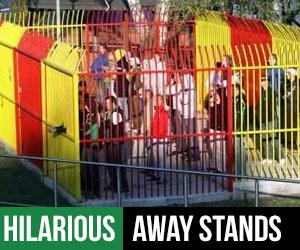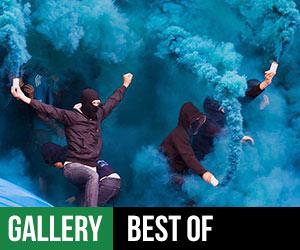Want to buy pyrotechnics? Visit pyro.ultras-tifo.net

Football is not just a sport; it is a global phenomenon that unites millions of fans. At the heart of this fervor are the ultras, passionate supporters who bring energy, creativity, and loyalty to their clubs. From South America’s Curvas Sud to Europe’s terraces, the ultras culture is diverse yet shares universal themes of dedication and love for the beautiful game. This article explores the differences and similarities in ultras cultures across continents.
The Passionate Heart of South America’s Curvas Sud
In South America, football is deeply ingrained in everyday life, and the Curvas Sud—the southern ends of stadiums where ultras gather—are its beating heart. Countries like Argentina and Brazil boast some of the most intense and colorful fanbases in the world. Clubs such as Boca Juniors and Flamengo are known for their supporters’ unwavering dedication and elaborate matchday displays.
What Sets South American Ultras Apart?
-
Tifo Masterpieces: South American ultras often create enormous banners and displays, called tifos, that cover entire sections of the stadium.
-
Unmatched Atmosphere: Drums, chants, and flares create a carnival-like vibe that is unique to this region.
-
Cultural Influence: Football here transcends the pitch, playing a key role in social and cultural identity.
Interestingly, the rise of digital platforms has allowed fans globally to adopt trends and share experiences. Whether coordinating choreographies or discussing how to play casino with bitcoin, the internet connects ultras and fans in new and unexpected ways.
The Tactical Organization of European Ultras
Moving across the Atlantic, European ultras are renowned for their tactical organization and discipline. In leagues like Serie A in Italy or the Bundesliga in Germany, ultras have a profound influence on the atmosphere and even the governance of their clubs. The Curvas and terraces of Europe are filled with die-hard fans who express their loyalty in strikingly unique ways.
Defining Features of European Ultras
-
Structured Groups: Ultras groups in Europe often operate as formal organizations with leadership structures, membership rules, and collective decision-making.
-
Political Undertones: Many European ultras groups are politically charged, using their platform to voice opinions on social and political issues.
-
Rivalries and Respect: Fierce rivalries, like the Derby della Capitale in Rome, highlight the competitive spirit, yet a code of respect often underpins the culture.
In countries like Germany, fan ownership models further empower supporters, allowing them to play an active role in shaping their clubs. This level of involvement underscores the depth of connection ultras have with their teams.
The Growing Influence of Ultras in Africa and Asia
While Europe and South America are often the focal points of ultras culture, Africa and Asia are emerging as hotspots for passionate supporters. From Cairo’s Al Ahly fans to Indonesia’s Persija Jakarta ultras, these regions are carving out their own identities in the global ultras scene.
Highlights of Ultras Culture in These Regions
-
Rapid Growth: Football’s popularity is surging, bringing with it an explosion of ultras groups.
-
Community Focus: Ultras in these regions often engage in community-building activities, showcasing their commitment beyond the stadium.
-
Adapting Traditions: Borrowing elements from European and South American groups while infusing local culture creates a unique dynamic.
The growth of ultras culture in Africa and Asia reflects the global appeal of football and its ability to inspire unity and creativity among fans.
Final Thoughts
From the vibrant Curvas Sud of South America to the disciplined terraces of Europe, ultras cultures are a testament to the universal passion for football. While each region has its distinct characteristics, the core values of loyalty, creativity, and community remain constant. As the influence of ultras continues to grow worldwide, their role in shaping the sport’s future is undeniable.











